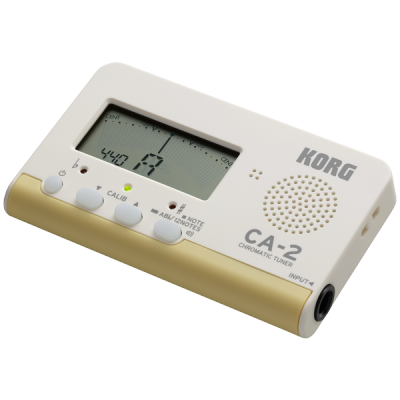Musicmakers Blog
Troubleshooting Your Harp
Helpful tips that address some of the most common issues with folk harps.

Tuning Tips for Harp
It is best to tune the harp with all sharping levers flipped down (disengaged), so there will be no interference from the levers. Please note that this means you may be tuning some strings to flats instead of natural notes. If you have levers on the B strings, for example, you should tune those strings to B-flat when the lever is flipped down. You will then flip these levers up when playing in the key of C.
Harp Not Staying in Tune?
Remember that it can take as many as 50 tunings to settle a new set of strings! Be patient. If you suspect something is amiss, however, here are some things to look for:
If your harp has TAPERED TUNING PINS, they can work themselves loose with time. Try pushing the tuning pins deeper into the neck. Use the tuning wrench and push as you turn the pin back and forth. You should be able to get the pins as tight as you like, but this requires some muscle power.
If your harp has ZITHER PINS that become loose in the neck, try pressing them (or turning them) deeper into the wood, so that more of the threads of the pin are buried in the wood. If that does not help, we have two options to solve the problem: 1) Pin Tite solution to drip around the pin to swell the wood fibers, or 2) oversize tuning pins.
If that does not improve the tuning, then your strings must be slowly slipping around the tuning pins on the NECK or else the knots inside the soundboard must be slowly untying themselves under the string tension. Refer to our stringing instructions, paying close attention to the application of Superglue to the knots, and the crossing of the windings around the tuning pins.
If the strings are well secured at each end, and the harp still does not stay in tune well, then you need to look for structural damage to the instrument. The soundboard may be pulling loose from the frame, the neck may be tipping over toward the strings, or the neck may be slowly cracking. Give the harp a good visual inspection.
Harp has Buzzing Strings?
Your harp need not suffer the problem of rattling or buzzing sounds when you play. If you hear such noises, you can correct them. Here are some troubleshooting hints:
If the buzzing sound occurs only when the sharping lever is flipped up (engaged), then you need to tighten the lever more firmly against the neck of the harp.
If the buzzing occurs when the lever is flipped down (disengaged), the string may be vibrating against some part of the sharping lever itself. If you have Loveland brand levers, look very closely at the position of the string as it passes through the lever bracket. It may be rattling against the plastic cam (the part that you flip up & down), or against the small "fretpost" (the part that the cam pinches the string against when engaged.) You can change the position of the string by raising or lowering the guide pin (bridge pin) on which the string rests above the sharping lever. (Make sure the string is resting in the groove of that pin.) Pull (or turn) the guide pin in or out, watching how that moves the string in relation to the sharping lever.
If the problem is not located around the sharping lever, you may have a loose end of string that is rattling inside the soundchamber. Put your hand inside the harp and touch the knotted ends while plucking the harp to see where the problem is located. Oftentimes you can solve it by simply trimming off a loose end of string or by twisting the knotted end in a different direction.
Occasionally we find some other loose item on the harp or inside the box that is vibrating when you play. Look for anything that is not fastened firmly in place. Move the harp to a different room and try again. Sometimes the buzz you think is emanating from the harp is actually coming from an object nearby.
Harp Needs Repairs?
If you ever need to repair the wood parts of your harp, you will be glad to know that, on most harps, the neck/pillar assembly can be removed from the soundchamber to facilitate repair work. Simply loosen the strings and unhook them from the tuning pins. Then remove any screws at the base of the harp that are holding the pillar to the base.
Considering purchasing a lever harp? Musicmakers builds a variety of lever harps to accommodate all harpists from beginner to professional. Our harp selection serves a variety of needs: travel, music therapy, and concert halls. We have something just for you.
